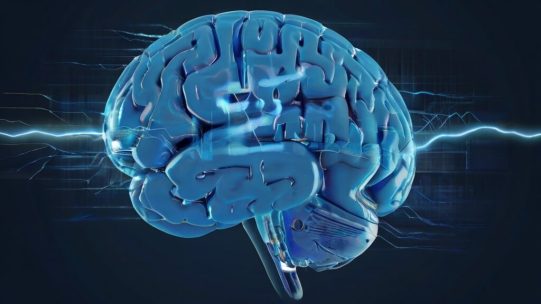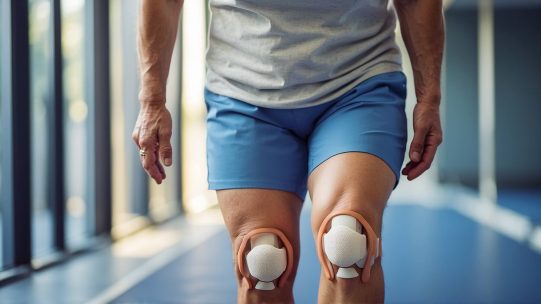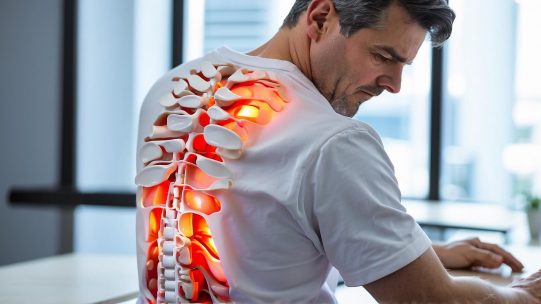How do painkillers actually kill pain? From ibuprofen to fentanyl to eliminate pain

Without the ability to feel pain, life would be more dangerous. To avoid injury, pain can teach us to use a hammer more carefully, wait for soup to cool, or wear gloves when playing snowballs. People with a rare genetic condition that prevents them from feeling pain cannot protect themselves from environmental threats, resulting in broken bones, skin damage, infections, and ultimately a shortened life expectancy.
In these situations, pain is not just a sensation: it is a protective call to action. However, pain that is too intense or prolonged can be debilitating. So how does modern medicine facilitate this call?
As neurobiologists and anesthesiologists who study pain, we and other experts have tried to answer this question. Over the past few years, science has made significant advances in understanding how the body senses tissue damage and perceives it as pain. It has become clear that there are multiple pathways by which tissue damage is transmitted to the brain and triggers a pain signal.
Interestingly, the brain uses different pathways to transmit pain signals depending on the type of damage, but there is also redundancy in these pathways. What is even more interesting is that these neural pathways transform and amplify the signal in the case of chronic pain or pain caused by pathologies affecting the nerves themselves, even if pain protection is no longer required.
Analgesics act on different parts of these pathways. However, not every analgesic is helpful for all types of pain. Because pain pathways are numerous and redundant, the perfect analgesic is difficult to find. On the other hand, understanding how existing analgesics work can help health care providers and patients use analgesics for the best results.
Anti-inflammatory painkillers
Contusions, sprains, and fractures from injuries lead to tissue inflammation, an immune response that causes swelling and redness as the body tries to heal itself. Specialized nerve cells in the injured area, called nociceptors, perceive inflammatory chemicals produced by the body and send pain signals to the brain.
Common over-the-counter anti-inflammatory and pain medications work by reducing inflammation at the site of injury. They are particularly useful for musculoskeletal injuries and pain caused by inflammation, such as arthritis.
Non-steroidal anti-inflammatory drugs such as ibuprofen (Advil, Motrin), naproxen (Aleve) and aspirin exert this action by inhibiting an enzyme called COX, which plays an important role in the biochemical cascade that produces chemicals that cause inflammation. Blocking this cascade reduces the amount of inflammation-producing chemicals and pain signals sent to the brain. Acetaminophen (Tylenol), also known as paracetamol, does not reduce inflammation like NSAIDs, but it inhibits the COX enzyme and provides similar pain relief.
Anti-inflammatory analgesics prescribed include other COX inhibitors, corticosteroids and, more recently, agents that aim to inactivate the inflammatory chemicals themselves.
Because the chemicals that cause inflammation are involved in other important physiological functions rather than simply causing pain signals, drugs that inhibit them have side effects and carry health risks, such as irritating the gastric mucosa and affecting kidney function. Over-the-counter medications are generally safe as long as the dosage and directions for use listed on the bottle are strictly followed.
Corticosteroids, such as prednisone, block the inflammatory cascade early on. However, since the chemicals of this cascade are present in almost all organ systems, long-term use of steroids may pose some health risks, so you should discuss this with your doctor before starting treatment.
Topical medications
Many topical medications target nociceptors (specialized nerves that sense tissue damage). Local anesthetics such as lidocaine prevent these nerves from sending electrical signals to the brain.
Protein sensors at the tips of other sensory neurons in the skin are also targeted by local anesthetics. By activating these proteins, they can induce specific sensations that reduce pain by reducing the activity of nerves sensitive to damage, such as the cold sensation from menthol or the burning sensation from capsaicin.
Because these topical agents act on small nerves in the skin, they are best used for pain that occurs directly on the skin. For example, an infection with shingles damages nerves in the skin, causing them to overactivate and send constant pain signals to the brain. Silencing these nerves with topical lidocaine or excessive amounts of capsaicin can reduce these pain signals.
Nerve injury medications
Nerve damage, common in arthritis and diabetes, causes the pain-sensitive part of the nervous system to overreact. Such damage can cause pain anxiety even in the absence of tissue damage. The most effective analgesics in these situations are those that dampen the alarm signals.
Antiepileptic drugs such as gabapentin (Neurontin) inhibit the pain sensitivity system by blocking electrical signaling in the nerves. However, gabapentin also reduces neural activity in other parts of the nervous system and can cause drowsiness and confusion.
Antidepressants such as duloxetine and nortriptyline are thought to act by increasing levels of certain neurotransmitters in the spinal cord and brain that are involved in the regulation of pain pathways. However, they can also alter chemical signaling in the gastrointestinal tract and cause stomach upset.
All of these medications are prescribed by physicians.
Opioids
Opioids are chemicals found in or derived from the opium poppy. One of the earliest opioids, morphine, was obtained in the 1800s. Since then, the medical use of opioids has expanded to include many natural and synthetic derivatives of morphine with varying potency and duration of action. Common examples include codeine, tramadol, hydrocodone, oxycodone, buprenorphine, and fentanyl.
Opioids reduce pain by activating the body’s endorphin system. Endorphins are a type of opioid that are naturally produced by the body, reducing pain signals and inducing euphoria, aka “runner’s high.” Opioids mimic the effects of endorphins by acting on similar targets in the body.
Opioids can reduce some types of acute pain, such as after surgery, for musculoskeletal injuries such as a broken leg, or for cancer, but are often ineffective for neuropathic injuries and chronic pain.
Because the body also uses opioid receptors in other organ systems such as the gastrointestinal tract and lungs, side effects and risks include constipation and potentially fatal respiratory depression. In addition, long-term use of opioids can lead to the development of tolerance, where more of the drug is needed to achieve the same analgesic effect. Therefore, opioids are addictive and are not intended for long-term use. All opioids are controlled substances and are prescribed with caution by physicians because of these side effects and risks.
Cannabinoids
Cannabis has garnered attention for its potential medical use, but evidence that it can effectively treat pain is scarce. Because cannabis use is federally illegal in the United States, there is a lack of high-quality, federally funded clinical trials.
What researchers do know is that endocannabinoids, a type of chemical found in cannabis, are produced naturally in the body and reduce the perception of pain. Cannabinoids can also reduce inflammation. Because of the lack of strong clinical evidence, doctors generally do not recommend cannabinoids in place of FDA-approved medications.
Matching pain to drug
The pain alarm is important for survival, but sometimes it is necessary to muffle it if it is too loud or not helpful.
No existing medication can treat pain perfectly. Selecting medications that target specific types of pain can improve pain relief, but even then, the medications may not be appropriate for people with the same conditions. Further research to improve medicine’s understanding of pain pathways and targets in the body may lead to more effective treatments and better pain management.










Comment